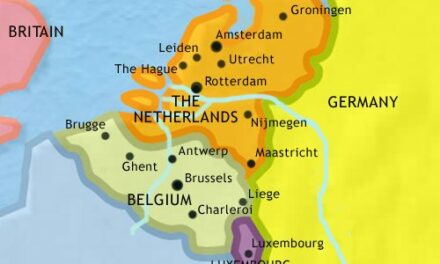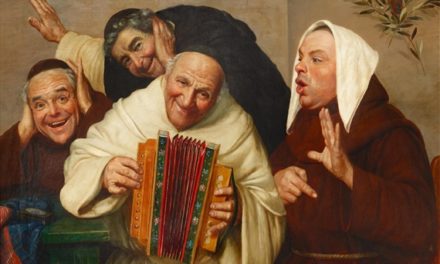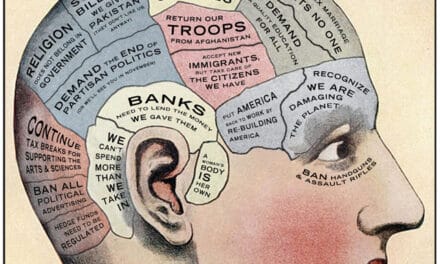This is the 7th and last episode in our series The Long Road to Reform.
In Italy, the Renaissance was a time of both prosperity and upheaval.
Moderns of the 21st C are so accustomed to thinking of Italy as one large unified nation it’s difficult to conceive of it as it was throughout MOST of its history; a patchwork of various regions at odds with each other. During the Middle Ages and a good part of the Renaissance, Italy was composed of powerful city states like Florence and Venice who vied endlessly with each other. Exacerbating the turmoil, was the interference of France and Germany who influenced affairs to their advantage.
It was within this mix of prosperity, intrigue, and emerging Renaissance ideals the papacy carried on during the last decades of the 15th Century.
I need to insert a cautionary footnote at this point. As this is the last of our series laying out the history for WHY the Reformation occurred, we need to deal with something that may be a bit unsettling for some of our listeners; the string of popes who were, how shall I describe them? Less than holy, less than the men of God others were. Even many loyal Roman Catholics acknowledge the men who’ve ridden Peter’s chair haven’t always been of sterling reputation. Not a few have been a ragged blight on the Holy See. That there was a string of them in the 15th Century helped set the stage for the Reformation.
And I hope this mini-series in CS has made it clear that Reform only became something OUTSIDE the Church when the decades old movement for it WITHIN the Church was forced to exit. Never forget Luther began a Roman monk and priest who was forced out.
During his reign in the mid-15th C, Pope Eugene IV sought to decorate Rome with the new artistic styles of the early Renaissance. He recruited Fra Angelico and Donatello. This began a trend among the Popes to imbibe the ideas of the Renaissance, especially in regard to art. They sought to adorn the city with palaces, churches, and monuments worthy of its place as the capital of Christendom. Some of the popes moved to greatly enlarge the papal library.
All this construction wasn’t cheap, especially the construction of St. Peter’s Basilica. So the popes came up with new ways to raise funds. A subject we’ll come back to later.
Not all Renaissance popes focused on the arts. Some were warlords who led military campaigns. Others took delight in playing the high-stakes game of political intrigue.
Eugene IV was succeeded by Nicholas V, who spent his term from 1447 to 55 trying to gain political dominance over the Italian states. His goal was to turn Rome into the intellectual center of Europe. He recruited the best authors and artists. His personal library was said to be the best. But, being a scholar didn’t preclude him being brutal. He ruthlessly pursued and executed any who opposed him. During his reign, Constantinople fell to the Turks. He called for a great Crusade to retake the City, but everyone knew he only wanted it to increase his own prestige, so they ignored him.
His successor was Calixtus III, who served only 3 years. Calixtus was the first pope of the Spanish family of Borgia. Under the guise of standing against an invasion by the Turks, Calixtus embarked on a campaign to unite Italy by military conquest. Nepotism reach a new height during his reign. One of the many relatives Calixtus elevated was his grandson Rodrigo, whom he appointed as a cardinal. This Rodrigo would later become the infamous Alexander VI.
The next pope was Pius II who served from 1458 to 64. Pius was the last of the Renaissance popes who took his office seriously. He tried to bring about the much-needed Reformation of the Church but his plan was stalled by powerful cardinals. Pius was a true scholar who began work on a vast Cosmography. Unable to complete the work before he died, it was instrumental in shaping the ideas of a certain Genoese ship’s captain named Cristofor Columbo.
Pius II was followed by Pope Paul II, an opportunist who, upon learning that his uncle, Eugene IV, had been made pope, decided a career as a churchman was more promising than his occupation as a tradesman. His main interest was collecting jewelry. His lust for luxury was proverbial, his concubines acknowledged by the papal court. Pope Paul wanted to recover the architectural glory of pagan Rome and devoted vast sums to the work. He died of internal bleeding, brought on by his debauchery.
Sixtus IV served from 1471 to 84 and came to power by literally buying the papacy. Corruption and nepotism reached new heights. His sole goal was to enrich his family, one of whom would become Pope Julius II. Under Sixtus, the church became a family business, and all Italy was involved in a series of wars and conspiracies whose sole purpose was to enrich the pope’s nephews. His favorite was Pietro who at the age of 26 he made a cardinal, the patriarch of Constantinople, and archbishop of Florence. Another nephew plotted the murder of one of the Medicis in Florence who was stabbed to death before the altar while saying mass. When the dead man’s relatives took revenge by hanging the priest who murdered him, the pope excommunicated the entire city of Florence and declared war.
Despite all these groteque shenanigans, history remembers Sixtus for something else entirely; the Sistine Chapel, which was named after him.
Before his election in 1484, Innocent VIII made a solemn vow to quit the nepotism that had become endemic to the Papacy. But as soon as he was pope he declared, since papal power was supreme, he wasn’t bound by the prior oath.
What’s the old phrase? “It’s good to be King.”
I guess we could also say, “It’s great to be Pope.”
Innocent VIII wasn’t! Innocent that is. He was the first pope to acknowledge several of his illegitimate children, on whom he heaped honors and wealth. Under the management of his son, the sale of indulgences became a shameless business proposition. Pope Innocent ordered Christendom to be cleared of all witches. Hundreds of innocent women were executed.
After Innocent’s death, Rodrigo Borgia bought the cardinals’ votes and became pope under the name of Alexander VI. He ruled from 1492 to 1503. Under Alexander, papal corruption reached its all-time zenith, or we should say, it’s nadir.
I hope Roman Catholic listeners don’t hear this and assume I’m just Catholic bashing. It’s Catholic scholars who chronicle all this. It’s simply a sad chapter in Church History.
Pope Alexander was a moral wretch who publicly committed all the capital sins, save for gluttony because of a persistent case of heartburn. The people of Rome, well-acquainted with Alexander’s excesses, said of him, “Alexander is ready to sell the keys, the altars, and even Christ himself. But, he’s within his rights, since he bought them.”
Alexander had numerous affairs with the wives of the men of court. These women gave him several children he openly acknowledged. The most famous of these were the infamous pair, Cesare and Lucrezia. Italy was besmirched by blood because of his many plots and wars. His court was so corrupt many fabricated tales were hatched. Sad, since there was no need to embellish the list of sins attached to his reign, which for long after hurt the reputation of the papacy.
Alexander VI died unexpectedly. The suspicion is that he mistakenly took a poison meant for another. His son Cesare had hoped to inherit the Holy See but was struck by the same ailment. So the cardinals elected Pius III, a reformer. He lasted 26 days before dying mysteriously. Can anyone say “Conspiracy?”
This brought Julius II to the papal seat, a worthy successor to Alexander.
When Popes are elected, they pick a name they want to take for their tenure as the head of the Church. The papal name gives us a hint how he sees his role; what he hopes to accomplish.
Julius was only the second to take that name, which exists as a harbinger for what he aimed to do. Appointed a cardinal by his uncle Sixtus IV, Julius modeled himself more after Julius Caesar than any saint. Like many of the popes of that era, Julius was a patron of the arts.
During his pontificate, Michelangelo finished the Sistine Chapel, and Raphael’s frescoes decorated the Vatican.
But this pope’s favorite pastime was war.
Visitors to the Vatican today are struck by the bright colors of the Swiss papal guard. The only way they could be called camouflage is if they were trying to hide in a Jason Pollock painting. It was Julius who reorganized the papal guard, dressing them in uniforms said to have been designed by none other than Michelangelo.
We might expect a Pope to make a poor general, but he was in fact so successful in his military and diplomatic exploits, it was rumored he might finally achieve the unification of Italy. Of course, France and Germany opposed these plans, but Julius defeated them both in diplomacy and on the battlefield. He died in 1513, earning the epithet, Julius the Terrible by his contemporaries.
He was succeeded by Giovanni, son of Lorenzo de Medici. Giovanni took the name of Leo X. Like his famous father, Leo was a patron of the arts. He failed to consolidate Julius’ military and political gains and in 1516 was forced to sign an agreement with Francis I of France that gave the king enormous authority in church affairs.
Leo’s immersion in the world of the arts overshadowed his pastoral concerns. He was determined to complete St. Peter’s in Rome. The financing of that project was the main purpose for the sale of indulgences that provoked the protests of a German monk named Martin Luther.
In our next episode, since we’ve now come right up to the Reformation in Europe, we’ll get caught up with our narrative of the Church in the East.
Martin, John, and Philip – that is Luther, Calvin and Melanchthon are just chomping at the bit to jump in.





